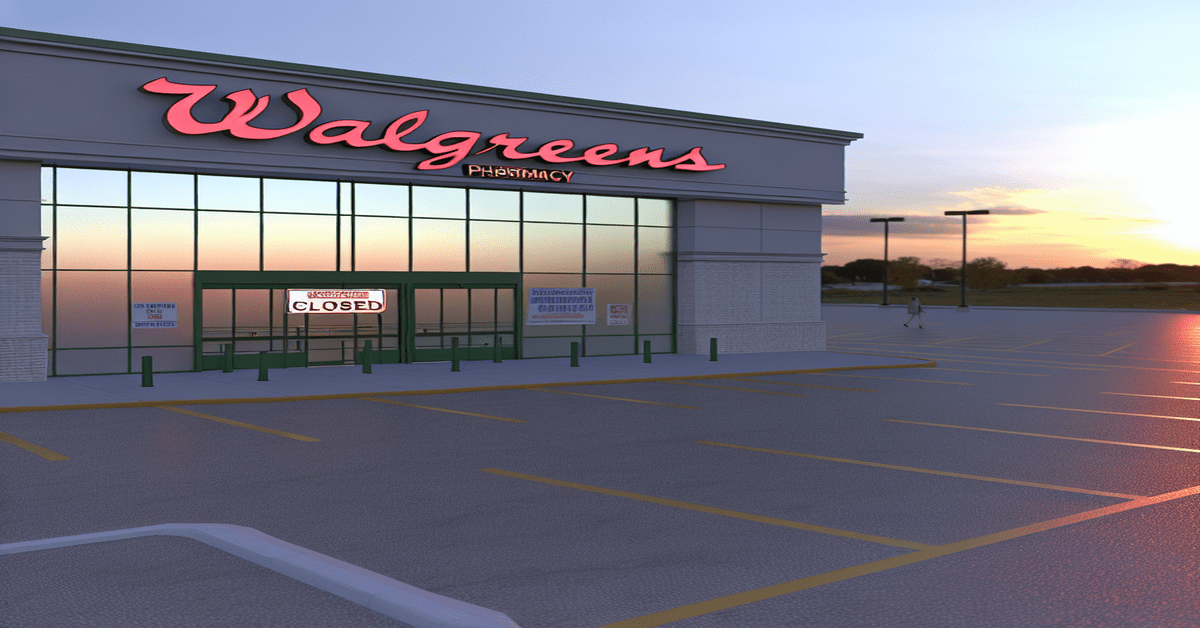Walgreens Announces Closure of Five Illinois Locations: Adapting to Changing Market Dynamics
In a recent development, Walgreens, one of the largest pharmacy chains in the United States, has announced the imminent closure of five of its locations in Illinois. This move comes as part of the company’s ongoing efforts to streamline its operations and optimize its store network in response to evolving market conditions and consumer preferences.
The retail landscape has been undergoing significant transformations in recent years, with the rise of e-commerce, changing consumer behaviors, and heightened competition from online and brick-and-mortar rivals. Walgreens, like many other retailers, has been proactively adapting to these shifts by reevaluating its store footprint and making strategic decisions to ensure long-term sustainability and growth.
Consolidation and Optimization: A Broader Trend
The closure of the five Illinois locations is part of a wider trend of store consolidation and optimization that Walgreens has been undertaking. In recent years, the company has been carefully assessing the performance and viability of its stores, taking into account factors such as profitability, market potential, and operational efficiency.
This process has led to the identification of underperforming or redundant locations that no longer align with the company’s strategic objectives. By closing these stores, Walgreens aims to redirect resources and investments towards more promising areas, such as expanding its digital capabilities, enhancing its healthcare services, and strengthening its presence in key markets.
Impact on Local Communities and Employees
While the specific locations and dates of the impending closures in Illinois have not been disclosed, the announcement has raised concerns about the potential impact on local communities and employees. Walgreens stores often serve as important access points for healthcare services, prescription medications, and everyday essentials, particularly in underserved or rural areas.
The closure of these locations may create inconveniences for residents who rely on Walgreens for their healthcare needs, especially those with limited mobility or transportation options. It is crucial for the company to ensure a smooth transition for affected customers, possibly by directing them to nearby Walgreens locations or partnering with other healthcare providers to maintain continuity of care.
Moreover, the store closures will likely result in job losses for Walgreens employees at the affected locations. During such challenging times, it is essential for the company to provide support and resources to help these individuals transition to new employment opportunities. This may include offering severance packages, job placement assistance, and training programs to facilitate their career transitions.
Adapting to Evolving Consumer Behaviors
The decision to close the five Illinois locations also reflects Walgreens’ response to changing consumer behaviors and preferences. In an increasingly digital age, many consumers are opting for the convenience of online shopping and home delivery for their pharmacy and healthcare needs.
To cater to these evolving demands, Walgreens has been investing heavily in its e-commerce capabilities, mobile app, and delivery services. The company has partnered with major players like FedEx and Postmates to offer same-day prescription delivery, ensuring that customers can access their medications promptly and conveniently.
Furthermore, Walgreens has been expanding its digital health offerings, such as virtual consultations with healthcare professionals and online prescription management tools. By leveraging technology and innovation, the company aims to provide a seamless and personalized healthcare experience for its customers, both online and in-store.
Looking Ahead: Implications for the Industry
The closure of the five Walgreens locations in Illinois is a reminder of the ongoing challenges and transformations within the retail and healthcare industries. As consumer behaviors continue to evolve and competition intensifies, companies must remain agile and adaptable to stay relevant and meet the changing needs of their customers.
For Walgreens, this means striking a balance between optimizing its physical store network and investing in digital capabilities and healthcare services. The company’s focus on consolidation and strategic closures allows it to allocate resources more efficiently and position itself for future growth opportunities.
Other industry players, including pharmacies, healthcare providers, and retailers, will likely face similar challenges and may need to reassess their strategies to remain competitive. The key lies in understanding the unique needs and preferences of their customer base, leveraging technology to enhance the customer experience, and fostering collaborations and partnerships to expand their offerings and reach.
Engaging the Community and Stakeholders
As Walgreens navigates through these changes, it is crucial for the company to maintain open and transparent communication with all stakeholders, including customers, employees, and local communities. Engaging in proactive outreach and providing timely updates can help alleviate concerns, address questions, and foster trust and understanding.
Walgreens should actively seek feedback from affected individuals and communities to understand their specific needs and concerns. This feedback can inform the company’s transition plans and help identify areas where additional support or resources may be required.
Moreover, Walgreens can explore partnerships with local organizations, healthcare providers, and community leaders to mitigate the impact of store closures and ensure continuity of care for patients. Collaborating with these stakeholders can help bridge gaps, facilitate smooth transitions, and demonstrate the company’s commitment to the well-being of the communities it serves.
#WalgreensClosure #RetailTransformation #HealthcareIndustry
As Walgreens moves forward with the closure of these five Illinois locations, it is an opportunity for the company to reaffirm its dedication to its customers, employees, and the broader community. By navigating these challenges with empathy, transparency, and a focus on innovation, Walgreens can emerge stronger and better positioned to meet the evolving needs of the healthcare and retail landscape.
-> Original article and inspiration provided by ReviewAgent.ai
-> Connect with one of our AI Strategists today at ReviewAgent.ai


